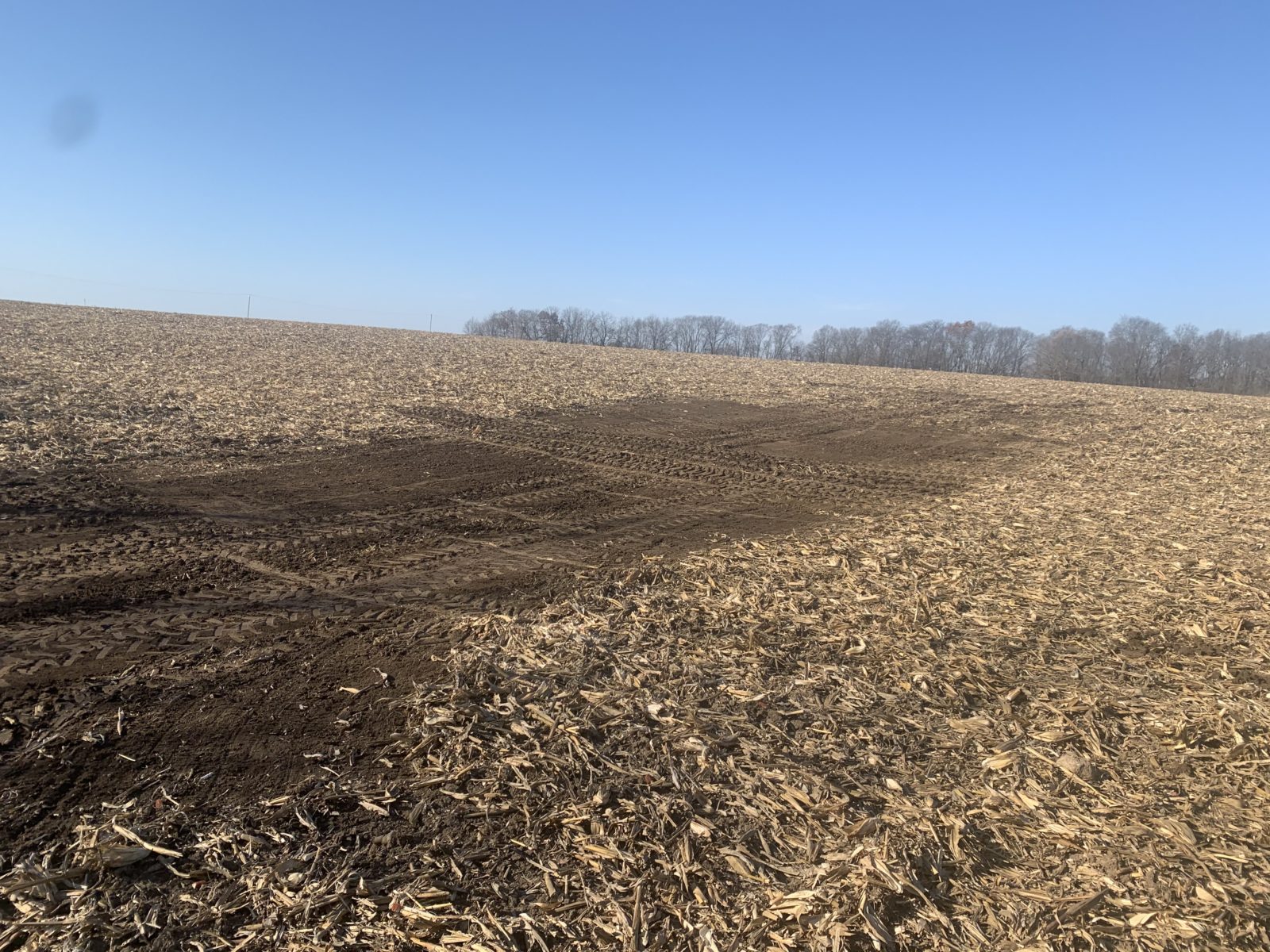 We finished harvest in late October, as we expected. Although we saw wide variability in yields between fields, the farm as a whole yielded right at our 5-year average. Our soybeans averaged 4.35 metric tons/hectare, or 64 bushels/acre, and our corn averaged 13.3 metric tons/hectare, or 210 bushels/acre. While we always like to beat our average, at least average maintains our stability.
We finished harvest in late October, as we expected. Although we saw wide variability in yields between fields, the farm as a whole yielded right at our 5-year average. Our soybeans averaged 4.35 metric tons/hectare, or 64 bushels/acre, and our corn averaged 13.3 metric tons/hectare, or 210 bushels/acre. While we always like to beat our average, at least average maintains our stability.
Since harvest, we have been focusing on fall fieldwork.
Our black, heavy soils benefit from being broken up, so we till our flat fields, where soil doesn’t move away. A combination of a disk with deep rippers both turns the top of the soil and breaks through the compaction layer. Our fields with soybean stubble are turned so only about 10 to 20% of the plant material left is visible, and the rest is worked into the ground to begin decomposing. Our cornfields have only about 20% of the leftover plant material on the surface.
We have some rolling fields that have slope to them, and on these fields, we use a vertical tillage tool to disturb less of the soil surface but still break up the compaction layer. In these fields, much more of the plant residue remains on the surface to protect the soil from erosion.
While we have moved to applying most of the nitrogen to our corn in-season, we have some fields that have lots of curved or short rows that would be difficult to side-dress. We plan to apply nitrogen fertilizer in the form of anhydrous ammonia yet this fall to these “crooked” fields that will be planted to corn next year.
 This fall, I also decided to start experimenting with a cover crop. This is the first time we have tried a cover crop. I split a 32.4-hectare, or 80-acre field in half. Corn grew there this year, and on half of it I did vertical tillage, like we do on rolling land, without planting anything. On the other half, I used my planter and a wheat disk to plant cereal rye as a cover crop into the field without tillage. And I will see what happens.
This fall, I also decided to start experimenting with a cover crop. This is the first time we have tried a cover crop. I split a 32.4-hectare, or 80-acre field in half. Corn grew there this year, and on half of it I did vertical tillage, like we do on rolling land, without planting anything. On the other half, I used my planter and a wheat disk to plant cereal rye as a cover crop into the field without tillage. And I will see what happens.
I will be evaluating the field to see how long it takes for each side to be ready to plant, if I can make fewer trips across the field, if there is any weed suppression from the cover, and how it impacts yields.
I plan to try cover crops in this field for a couple years to see what we can learn about the fit they might have in our production system. Cover crops may not fit all our acres, but they may have a place to help with some of them. I won’t know how they may work until we experiment.
I also expect to have time to do some dirt work in our fields, fixing areas that have washed up building up areas to keep soil from moving.
The end of harvest does not mean the end of time spent in the fields this year. It just means we are working on next season.

